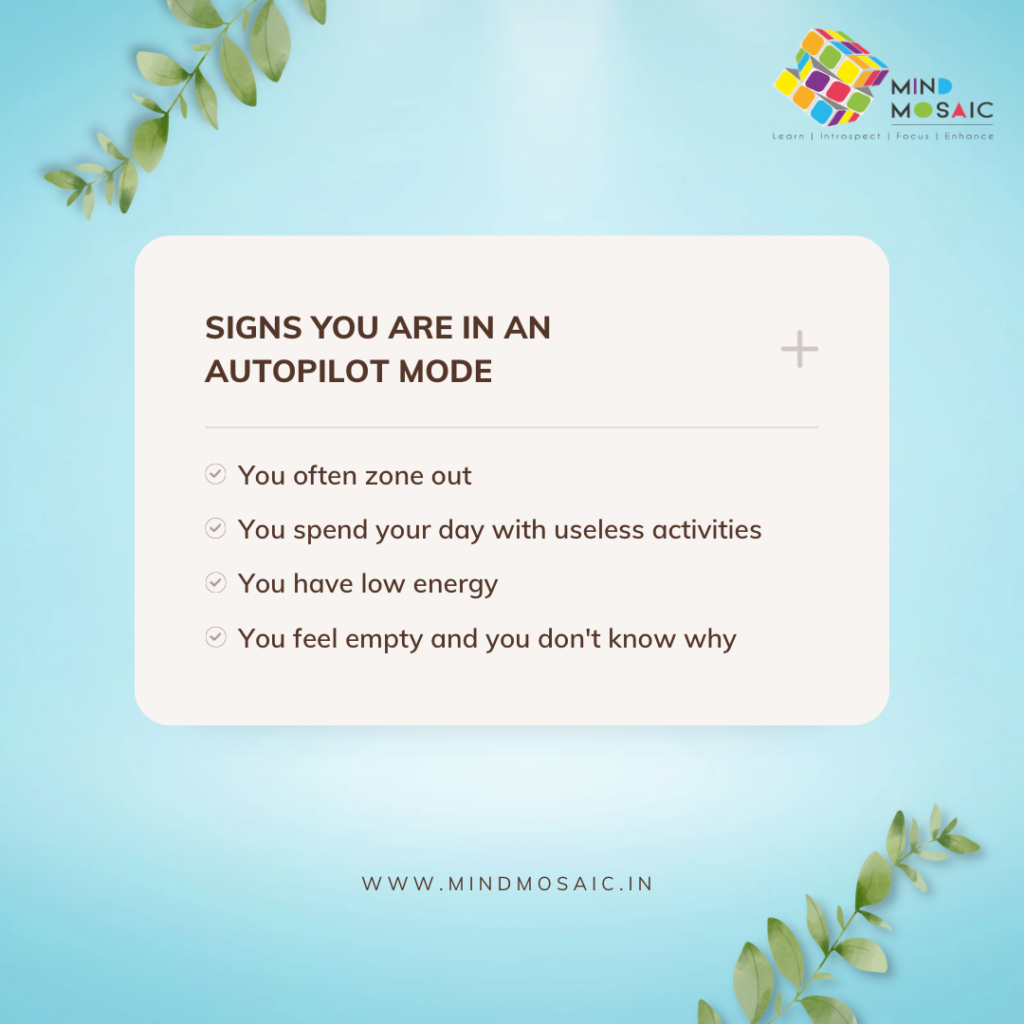
In today’s fast-paced world, it’s all too easy to slip into autopilot mode, where you go about your daily routine without much conscious thought. While this automated state can be helpful for efficiency, it can also lead to a lack of awareness and missed opportunities. In this blog post, we’ll explore some of the other important signs that indicate you might be in autopilot mode and provide tips on how to regain control of your life.
- Lack of Awareness
One of the most noticeable signs of autopilot mode is a lack of awareness. You go through your day without truly being present in the moment. You might not notice the beauty of your surroundings or the people you interact with.
- Routine Actions
When you find yourself performing routine tasks without much thought, you’re likely in autopilot mode. This could be something as simple as making your morning coffee or driving to work along your usual route without remembering the journey.
- Time Passing Quickly
Have you ever experienced a day flying by without you realizing it? Time seems to pass quickly when you’re on autopilot because you’re not actively engaging with your experiences.
- Minimal Decision-Making
In autopilot mode, decision-making becomes minimal. You may default to familiar choices and follow a predetermined script, missing out on opportunities for personal growth and change.
- Memory Gaps
Autopilot mode can lead to memory gaps. You might struggle to recall the details of recent actions, conversations, or events because you weren’t fully present when they occurred.
- Reduced Creativity
When you’re in autopilot, your creative thinking can suffer. You’re less likely to come up with innovative solutions or explore new perspectives because your mind is operating on autopilot.
- Repetitive Behavior
Being stuck in repetitive patterns without a clear sense of purpose is another sign of autopilot mode. You do things because it’s what you’ve always done, not necessarily because they align with your goals or values.
- Daydreaming
Daydreaming is a common occurrence in autopilot mode. Your mind wanders, and you may find it challenging to stay focused on the task at hand.
- Missed Opportunities
Perhaps the most significant downside of autopilot mode is the potential to miss out on opportunities. When you’re not fully engaged, you might not notice chances for personal or professional growth passing you by.
Regaining Control
Now that we’ve identified these signs, it’s essential to learn how to regain control and live a more mindful, purposeful life.
- Practice Mindfulness: Mindfulness techniques, such as meditation and deep breathing exercises, can help you become more present in your daily life.
- Break Routine: Introduce variety into your routines to break the monotony of autopilot living. Try new experiences and challenge yourself to step out of your comfort zone.
- Set Intentions: Start your day with clear intentions. What do you want to accomplish? Setting goals and staying mindful of them can keep you from drifting into autopilot.
- Reflect Regularly: Take time to reflect on your actions and decisions. Are they aligned with your values and goals, or are you simply following the path of least resistance?
- Embrace Novelty: Seek out novelty and new experiences. Travel to new places, meet different people, and engage in activities that stimulate your curiosity.
Recognizing the signs of autopilot mode is the first step towards regaining control of your life. By cultivating mindfulness, breaking routine, setting intentions, reflecting, and embracing novelty, you can live a more conscious and purposeful existence. Don’t let life pass you by in autopilot mode; take the reins and steer your life in the direction you desire.
